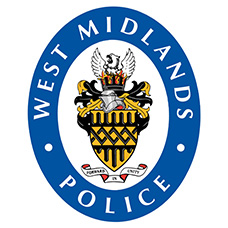Overview for Hawbush Road, BRIERLEY HILL, DY5 3LY
Summary for Hawbush Road, BRIERLEY HILL, DY5 3LY
Roadworks near DY5 3LY
Road Safety near DY5 3LY
Details of personal injury accidents in and around Hawbush Road, DY5 3LY that have been reported to West Midlands Police over the past 20 years.
Traffic Levels near DY5 3LY
View traffic levels near Hawbush Road, DY5 3LY from official Department for Transport counts.
Images taken near to Hawbush Road, DY5 3LY and the surrounding area
Please click the More button for more images, licensing and image copyright information.
Police
This area is policed by West Midlands Police.
West Midlands Police split their policing area into 89 separate neighbourhoods and this postcode is in the Brierley Hill neighbourhood.

Brierley Hill Neighbourhood Crime
Top 3 Categories
For full details of all categories together with more crime information, click on the Details button.
Member of UK Parliament
This postcode is in the Dudley South parliamentary constituency.
Dudley South is a former constituency. It ceased to exist following the boundary change in 2024. It was located in the West Midlands region of England. The seat was last held by Mike Wood (Conservative) between 7 May 2015 to 30 May 2024.

Most Recent House Sales for Hawbush Road, DY5 3LY
14 Jun 2024
2 Feb 2024
31 Aug 2021
19 Dec 2018
Electricity Supply Emergency Code
Local Petrol Station Prices
Coordinates for DY5 3LY
Residents at DY5 3LY
Sunrise and Sunset at DY5 3LY
Traffic Emission and Congestion Zones
Historical Weather Summary
| Clear | 18.68% |
| Cloudy | 68.16% |
| Rain | 6.03% |
| Windy | 7.08% |
| Other | 0.05% |
Population
Deprivation Index
the more deprived the postcode
Average Energy Performance
Companies Registered at DY5 3LY
Postcode Details for DY5 3LY
Recent Updates
|
2 Dec 2024 Energy Performance Certificates (England and Wales) updated October 2024 |
|
2 Dec 2024 Sold House Price data updated for October 2024 |
|
2 Dec 2024 Police and Crime data updated for October 2024 |
|
6 Nov 2024 Schools Data Updated for November 2024 |
|
5 Nov 2024 Energy Performance Certificates (Scotland) updated July 2024 |
|
3 Nov 2024 Energy Performance Certificates (England and Wales) updated September 2024 |
|
2 Nov 2024 Police and Crime data updated for September 2024 |
|
2 Nov 2024 Sold House Price data updated for September 2024 |
Random Postcodes
Want an idea of what is in our extensive website? Try somewhere completely random!
The Rural/Urban classification is based upon data collected during the 2011 Census and released in August 2013 and is categorised into 6 distinct classes.
[A] Urban Major conurbation: A built up area with a population of 10,000 (3,000 in Scotland) or more and is assigned to the major conurbation settlement category.
[B] Urban Minor conurbation: A built up area with a population of 10,000 (3,000 in Scotland) or more and is assigned to the minor conurbation settlement category.
[C] Urban City and town: A built up area with a population of 10,000 (3,000 in Scotland) or more and is assigned to the city and town settlement category.
[D] Rural Town and fringe
[E] Rural Village
[F] Rural Hamlet and isolated dwelling
The Index of Multiple Deprivation (IMD) is the official measure of relative deprivation.
The index is based on 39 separate indicators across seven distinct domains (Income; Employment; Health and Disability; Education, Skills and Training; Crime; Barriers to Housing and Services; Living Environment) to provide an overall measure of multiple deprivation and is calculated for every neighbourhood.
The index is relative rather than an absolute scale and so a neighbourhood with a score of 10 is more deprived than one rated 20, but this does not equate to being twice as deprived.
Please note: Different indices are used in England, Scotland, Wales and Northern Ireland and so comparison of scores from neighbourhoods in different countries should not be undertaken.
These figures report on incorporated UK companies only that are registered at this postcode and do not include sole-traders, partnerships or overseas organisations.
The population figure shown for your area are an estimate provided by the Office for National Statistics and is rounded to the nearest 1,000.
The estimates are derived from the Annual Population Survey (APS) which is the Labour Force Survey (LFS) plus various sample boosts.
There are 36 metropolitan district councils which together cover 6 large urban areas: the counties of Greater Manchester, Merseyside, South Yorkshire, Tyne and Wear, West Midlands, and West Yorkshire.
Metropolitan districts are responsible for all services in their area, although certain conurbation wide services such as fire and civil defence, police, waste disposal and passenger transport are provided through joint authorities (the districts acting jointly).










